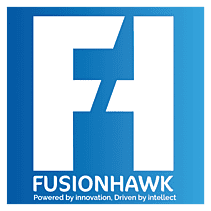How Virtual SDRs and Assistants Are Changing Work
Introduction: The New Face of Work
The way we work is evolving—fast. As businesses seek speed, precision, and scalability, traditional workflows often fall short. Enter AI agents—intelligent virtual workers designed to streamline operations, especially in high-volume, high-interaction roles like sales and support.
Among these, virtual Sales Development Representatives (SDRs) and AI assistants stand out as game-changers, handling everything from prospecting to appointment scheduling. They're not just supporting human workers—they're becoming essential digital teammates.
1. What Are AI Agents and Virtual SDRs?
What Is an AI Agent?
An AI agent is a software program that:
Perceives its environment: It processes user queries, data, and contextual information.
Makes informed decisions: Based on predetermined goals, rules, and learned insights.
Takes action: It autonomously or semi-autonomously completes tasks, from simple responses to complex workflows.
They can be:
Conversational agents: Chatbots or voice assistants that engage users directly.
Autonomous agents: Systems that independently complete tasks and initiate processes.
Task-specific agents: Designed for niche applications such as lead qualification or meeting scheduling.
Virtual SDRs
Virtual SDRs are AI agents specifically crafted to manage the top-of-funnel sales processes:
Prospecting Leads: Scanning data sources for potential customers.
Automated Outreach: Sending personalized cold emails, messages, or social media interactions.
Engaging Prospects: Handling initial questions and guiding prospects through qualifying conversations.
Booking Meetings: Seamlessly coordinating with human sales reps via calendar integrations.
Leveraging the power of natural language processing (NLP), machine learning, and CRM integration, these digital salespeople work around the clock, ensuring that every potential lead is nurtured and engaged.
2. Why Virtual SDRs and Assistants Are on the Rise
Key Drivers
Instant Digital Interaction: Customers and prospects now expect immediate, personalized responses.
Workforce Scalability: Companies strive for increased efficiency without a linear expansion of headcount.
Cost Efficiency: Automating repetitive tasks reduces labor costs and streamlines operations.
24/7 Global Reach: With continuous availability, AI agents serve audiences regardless of time zones.
3. Key Capabilities of AI Agents
For Virtual SDRs:
Prospect Research: Automatically aggregates data from public profiles, LinkedIn, and CRM systems.
Personalized Outreach: Crafts tailored messages using enriched data and context-aware information.
Real-Time Engagement: Conducts live conversations to answer common queries and overcome objections.
Qualification: Uses preset criteria (like BANT) to prioritize high-quality leads.
Meeting Scheduling: Integrates with calendars to book appointments seamlessly.
Data Logging: Records every interaction into CRMs such as Salesforce or HubSpot for future analytics.
For AI Assistants:
Task Management: Organizes to-dos, reminders, and project timelines.
Inbox Triage: Sorts emails, drafts responses, and flags urgent messages.
Calendar Coordination: Automates scheduling, rescheduling, and conflict resolution.
Meeting Summaries: Captures and condenses key points from discussions.
Workflow Automation: Integrates with popular apps (Slack, Notion, etc.) to run automated processes.
4. Real-World Examples
B2B Startup Sales Expansion
A fast-growing SaaS company leveraged Regie.ai to automate its prospecting efforts:
Outbound Efficiency: Increased outbound email volumes fourfold.
Conversion Boost: Doubled the rate of meeting bookings.
Efficiency Gains: Reduced reliance on human SDRs while maintaining quality leads.
Healthcare Front-Desk Automation
A medical practice integrated an AI assistant to handle:
Patient Appointments: Automating booking processes.
Common Inquiries: Responding to frequently asked questions about insurance, hours, and procedures.
Operational Streamlining: Reducing administrative calls by 70% and allowing staff to focus on patient care.
E-Commerce Customer Support
An online fashion retailer utilized AI chatbots to:
Instant Resolutions: Address 80% of customer inquiries immediately.
Integrated Processes: Link with returns and shipping APIs.
Resource Allocation: Free up human agents to resolve more complex issues.
5. Human SDRs vs AI SDRs: A Comparison
| Feature | Human SDR | AI SDR |
|---|---|---|
| Availability | Limited to business hours | 24/7 global coverage |
| Personalization | Manual research, moderate personalization | Automated enrichment for deep personalization |
| Scalability | Constrained by headcount | Easily scales to thousands of interactions |
| Cost | High due to salary, benefits, training | Lower operational costs, subscription-based |
| Speed of Outreach | ~50–100 emails per day | 1,000+ messages per hour |
| Learning Curve | Requires significant training | Pre-trained and continuously learning |
| Empathy & Nuance | Strong interpersonal skills | Evolving empathy with advanced NLP |
6. Benefits to Teams and Businesses
Sales Teams: Can focus on closing deals by working only with highly qualified leads.
Operational Efficiency: Enhanced predictability with automated, well-logged workflows.
Customer Experience: Consistent, swift responses lead to improved satisfaction.
Marketing Optimization: Ability to rapidly test and iterate messaging campaigns.
Executive Oversight: Significant cost savings allow for reallocation of resources toward strategic growth.
7. Challenges and Considerations
Potential Drawbacks
Loss of Human Nuance: AI may miss the subtle cues that foster deep trust and relational bonds.
Risk of Over-Automation: Excessively mechanized interactions can sometimes come off as impersonal.
Integration Complexity: Seamless API connectivity with existing systems remains a technical hurdle.
Data Privacy Concerns: Adherence to data protection laws (GDPR, HIPAA) is imperative to avoid potential breaches.
8. Future Trends: Where Are We Heading?
Voice-Enabled AI Agents
The next frontier in AI involves voice-enabled SDRs and call bots:
Natural Conversational Skills: They will manage both inbound and outbound voice interactions.
Real-Time Qualification: Capable of qualifying leads via natural dialogue.
Appointment Setting: Voice bots will handle scheduling on the fly, enhancing responsiveness.
CRM-Native AI Integration
The near future promises deeper integration with CRM systems:
Real-Time Analytics: AI directly embedded in CRMs will provide actionable insights.
Proactive Suggestions: Recommend next actions based on live data.
Workflow Automation: Trigger automated responses and follow-up actions without manual intervention.
Emotion-Aware Bots
Advancements in sentiment analysis and affective computing may soon enable AI agents to:
Detect Emotional Cues: Alter responses based on a user’s tone or sentiment.
Enhance Personalization: Offer a more empathetic interaction based on emotional context.
Mitigate Frustration: Recognize when a human touch is needed and escalate accordingly.
AI-to-AI Collaboration
Looking ahead, AI agents may start collaborating with one another:
Integrated Task Completion: One agent could flag a lead, while another schedules a meeting seamlessly.
Chained Automation: Multiple bots working in concert can handle complex workflows without human intervention.
Resource Sharing: Data and insights can be shared across AI agents to optimize overall performance.
9. Common Pitfalls to Avoid When Deploying AI Agents
Too Rapid a Rollout: Avoid launching full-scale automation on Day 1; instead, begin with pilot programs.
Ignoring Data Quality: Bad training data leads to suboptimal outputs—ensure data integrity.
No Human Backup: Always provide an option to transfer the conversation to a human to prevent user frustration.
Insufficient Analytics: Monitor interactions meticulously to fine-tune and improve performance.
Opaque Operations: Maintain transparency with users by informing them when they’re dealing with an AI.
10. Sample AI-Driven Sales Workflow
Step-by-Step Journey Using a Virtual SDR:
Lead Sourcing:
AI scrapes LinkedIn, public databases, and website contact forms to identify potential leads.
Lead Enrichment:
Tools like ZoomInfo or Apollo add crucial details such as industry information and job roles.
Personalized Outreach:
A customized email is drafted based on the lead’s specific pain points and industry trends.
Response Handling:
The bot conducts real-time conversations, addressing common objections and offering additional resources.
Qualification:
Using preset criteria, the AI determines if the lead is a fit for a deeper sales engagement.
Meeting Scheduling:
Once qualified, the AI automatically syncs with the sales rep’s calendar to book a meeting.
Seamless Handoff:
The conversation and essential context are logged in the CRM, ensuring the human rep is fully informed.
11. Sample Conversation: AI SDR in Action
Conclusion: AI Agents Are Your Next Best Hire
In an economy driven by speed, personalization, and data, AI agents have become indispensable. Whether it’s a virtual SDR booking hundreds of meetings or an AI assistant managing your inbox, these tools are transformative assets that enable businesses to thrive in an increasingly competitive landscape.
Rather than replacing human talent, AI agents empower teams by removing repetitive tasks, allowing human workers to focus on strategic, creative, and relationship-building functions. The future workplace is a collaborative space where AI augments human capabilities, resulting in higher efficiency, improved customer experiences, and significant cost savings.
Contact Us
We’re excited about the future of AI in the workplace and are here to help you navigate this transformation. Whether you have questions, need further insights, or want to explore AI solutions tailored to your business needs, our team of experts is ready to assist.








